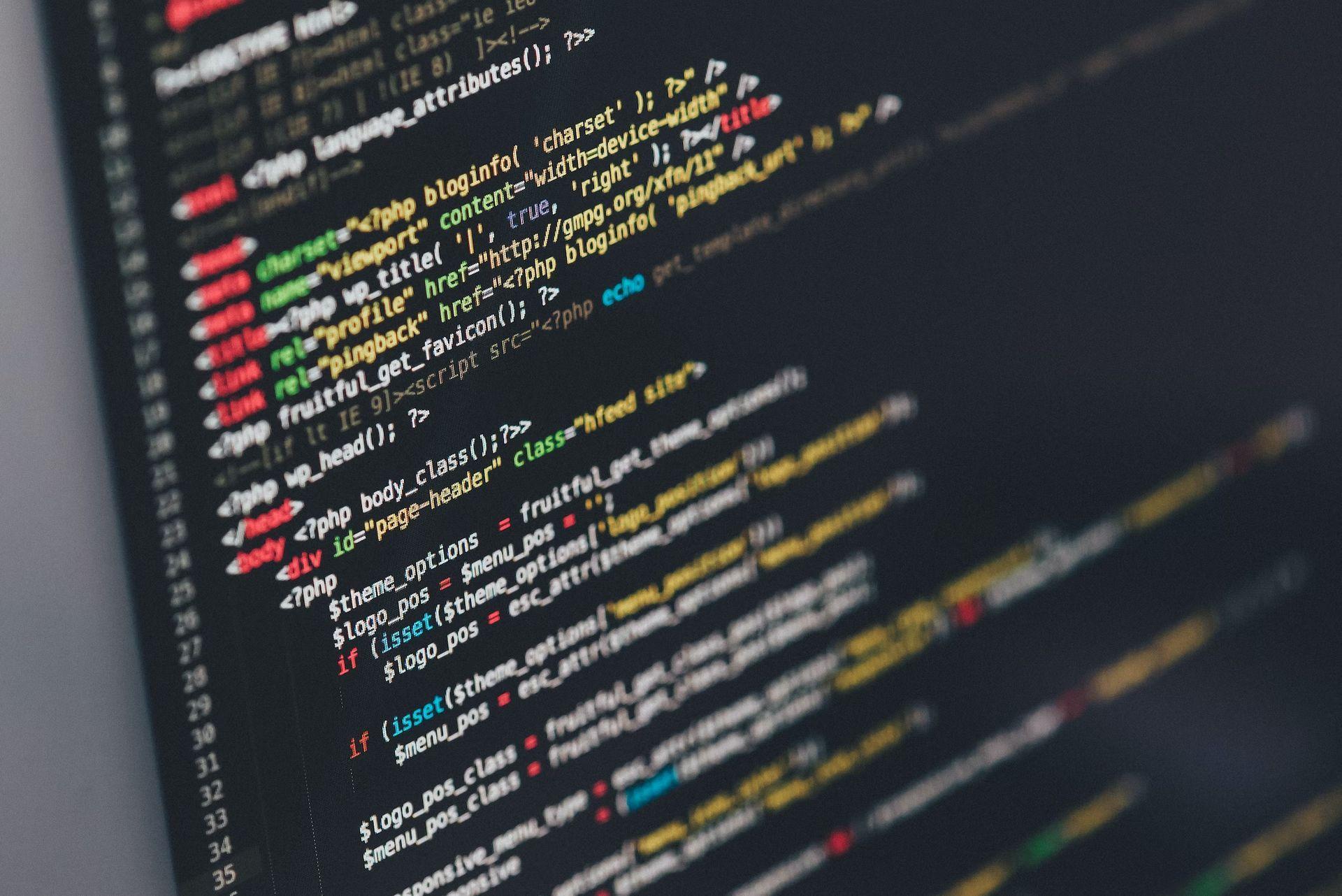Looking for the best language for machine learning? If you’re new to the topic, the hardest part of mastering machine learning is figuring out where to start. It is normal to question the ideal language for machine learning, regardless of whether you are looking to brush up on your machine learning knowledge or completely change careers.
Finding the ideal programming language for machine learning is undoubtedly difficult because over 700 distinct programming languages are widely used, and each has advantages and disadvantages. The good news is that you’ll start to identify which programming language will best suit a business problem you are trying to address as you start your journey as a machine learning engineer.
Best language for machine learning
Which programming language is ideal for machine learning is certainly on your mind if you’re considering a career in this area. While numerous options are available for various uses, in this post, we’ll focus on the top machine learning languages.

Machine learning programming
It’s crucial to comprehend the fundamentals of creating an ML model before discovering why particular programming languages are better suited for ML.
The closest thing to imitating the human brain is machine learning. In order to create predictions, ML algorithms look for patterns in large swathes of data, such as photos, numbers, or text. These robust machine learning algorithms are what power search engines and content recommendation systems.
The dataset must correspond to the predictions the model will produce in the real world. Training data can be categorized into classes, and the model will learn to distinguish between the classes by identifying distinctive characteristics and patterns. For instance, the dataset will contain images of the two animals with the appropriate labels if you train a model to sort zebras and giraffes.

To ensure that the model’s predictions are accurate and fair, you should create an inclusive dataset. The dataset ought to be comprehensive, deduplicated, randomized, deduplicated, and divided into training and testing sets.
The training set is used to train the model, and the test set is used to evaluate the model’s accuracy and spot any potential problems. There shouldn’t be any data overlap between the training and test sets.
The model iteratively trains on the dataset, modifying weights and biases in response to inaccurate outputs.
Unraveling the matryoshka doll: AI vs. ML vs. ANN vs. DL
Testing or evaluating the model on fresh data that has never been used for training will allow you to determine how accurate it is. This will enable you to comprehend how your ML model functions in practical situations.
After evaluation, you can adjust hyperparameters that we might have initially taken for granted during training; doing so can sometimes be an experimental process that varies depending on your dataset, model, and training procedure. After understanding the basics of ML programming, the next step you need to take is to find the best language for machine learning, considering the needs of your project.
The future of machine learning
In addition to providing fantastic development prospects, machine learning is upending established sectors. One of humanity’s greatest partners, machine learning enables organizations to make better decisions, aids developers in solving challenges creatively, and provides insights continuously at superhuman speeds and accuracy.
Healthcare, finance, banking, retail, manufacturing, and transportation are just a few of the industries that have used machine learning. Machine learning has the potential to transform these industries in a variety of ways, from ground-breaking innovations to more routine tasks like fraud detection or customer service.

Predictive analysis is another use of machine learning that will be used more frequently. Predictive analytics requires the creation and assessment of models to provide accurate projections. There are several utilized, including Python, R, and RapidMiner. The model also offers sales and marketing forecasts.
Predictions are made by identifying patterns and evaluating causal relationships in both recent and historical data. Future data forecasting also makes use of this information. Examples of this type of analytics include regression, classification, and segmentation training algorithms.
For instance, banks can test hypotheses using machine learning approaches. A bank can predict which customers are most likely to default in the future by looking at previous data on which customers have defaulted. You’ll be in a better position to decide whether to approve a loan as a result. If you want to change the future, maybe finding the best language for machine learning for your initiative can be a key factor.
Machine learning language list
- PythonScala
- R programming
- Java and JavaScript
- C++
- Shell
- Golang
- Lisp
- Julia
- TypeScript
Top 10 machine learning languages
Now let’s examine the best language for machine learning. Will we be able to find it? At the end of the day, the best language for machine learning will depend on your project!

Python
Python is a lightweight, adaptable, and straightforward programming language that can power sophisticated scripting and online applications when used in a strong framework. As a general-purpose programming language, it was developed in 1991. Developers have long praised its simplicity and ease of learning, and its popularity knows no bounds. It is versatile and supports a variety of frameworks and libraries.
Because Python is one of the most in-demand programming languages for machine learning, data analytics, and web development, and because it is quick to code and simple to learn, Python engineers are in demand. Everyone enjoys Python because it offers a lot of coding flexibility. It has a number of visualization packages and significant core libraries like sklearn, seaborn, etc., because of its scalability and open-source nature. These strong libraries facilitate coding and give computers the ability to learn more.
ML engineers build the bridge between data and AI
The procedural, imperative, functional, and object-oriented development paradigms are all supported by Python. TensorFlow and Scikit are two extremely well-liked machine learning libraries among Python programmers. It is regarded as the best for data science, sentiment analysis, natural language processing, and data science prototyping. Python is considered the best language for machine learning by a lot of coding experts.

Scala
A popular compiled language called Scala makes executable code run quickly. It has a static type of system that works well with Java libraries and frameworks. Enterprise-level programs with large databases and scalable solutions are known to be handled by Scala. Its unique selling point is the ability to build apps that are powered by big data and include vast amounts of data.
Because of its powerful backend language, it can handle a large volume of data flow. Scala’s MLLIB library, which the well-known Apache Spark supports, provides competitive functionality. Combining Spark’s capabilities with other big data tools and technologies gives developers an efficient way to create, design, and deploy machine learning algorithms.
Many useful libraries in Scala, including Aerosol, Saddle, and others, can be used to create programs for scientific computing, linear algebra, and random number generation. These libraries provide excellent data manipulation capabilities through various features like automated data alignment, 2D data structures, and other features. Scala can easily be counted as the best language for machine learning if you are looking to handle a large volume of data flow.

R programming
R is a well-known open-source data visualization language with a strong emphasis on statistical computing that dominates the machine learning space. The R Foundation and R development core team are in charge of its administration. The USP of R is that it is preferred by professionals like analysts, statisticians, and data miners who are not well-versed in coding. It supports a command line and other IDEs, makes coding simple, and has various tools for better library management and graphing.
Thanks to its distinctive characteristics that help develop machine learning apps, R has a good resource pool. It has been widely used for data and statistics. With its powerful computational capabilities, effective machine learning solutions can be provided. It is a graphics-based language used by large corporations, particularly in the biomedical industry, and data scientists for graph-based data analysis.
Machine learning techniques like classification, regression, decision tree building, etc., are often implemented in R. It has been a dynamic, imperative, functional language because of its statistical and functional properties. It supports a variety of OSes, including Windows, Linux, and OS X.

Java and JavaScript
Java and JavaScript are general-purpose programming languages that have established value for machine learning methods and applications. These languages, renowned for their stability and dependability, are object-oriented and support intensive data processing skills. Strong Java frameworks that handle machine learning algorithms, decision trees, regression approaches, etc. include Weka, Rapid Miner, and others. When used with enterprise-based systems, it has been quite effective. Because it is a simple language to learn, there are many resources available for JavaScript.
Finding loopholes with machine learning techniques
Giant firms frequently use Java and JavaScript in their high-profile initiatives. These technologies, thought to be efficient for machine learning applications, rely on the numerous machine learning libraries connected to them. They are being used by experts to strengthen network security and to identify frauds and cyberattacks.
The Java and JavaScript programming languages enjoy a large following in the machine learning community as a result of their features, including package services, graphical representation, and greater user involvement. When creating algorithms and interpreting them on dashboards and reports, they ensure they are quick, accurate, and precise. That is why, depending on the project, Java can be the best language for machine learning models.

C++
Powerful, adaptable, and well-liked, C++ is one of the world’s most widely used and favored programming languages. And there is no turning back when it comes to creating machine learning algorithms. These are established languages that have long dominated the developer community and, thanks to regular upgrades, have kept up with the most recent technological developments.
Since they are regarded as low-level languages, computers can easily understand them. Offering hardware-level features is simple, making it simple to integrate machine learning apps on IoT devices. It is perfect for these applications due to its quick execution and delivery times.
Many powerful libraries, including Torch, TensorFlow, and others, are created in C/C++. They have demonstrated their value for applications that depend on performance. C++ can perform meticulous memory management at a detailed level and manipulate algorithms. It provides extensive control over various performance parameters, which makes it the best language for machine learning in some situations.

Shell
The Unix shell, a command-line interpreter, was designed to run the shell programming language. Shell is a great option for creating machine learning models, algorithms, and applications because of its scripting languages and wrappers, which use its straightforward syntax.
Through the use of mathematical models, Shell, a user interface for performing processes, can be very useful in gathering and preparing data. All operating systems, including Windows, Linux, and macOS, can use Shell, which provides extremely high mobility.
Data collection and preparation for further computation are accomplished using shell commands and scripts. It offers a simple and user-friendly method of processing data.

Golang
Go (Golang) has gained popularity because of its key characteristics, including its open-source status, Google ownership, and execution-lightness. With several processes being completed simultaneously, it has the ability to include massive data sets more easily. Its positive aspect is its concurrency. It is a programming language for systems and comes with a built-in vocabulary.
It is one of the languages that is GitHub’s fastest-growing, and cloud computing services often accept it well. It is well-liked in the serverless computing infrastructure due to characteristics like garbage collection, dynamic typing, etc., similar to C.
Go is seen as relatively easier to learn, and developers quickly accept it thanks to its clear syntax and security. It might be the best language for machine learning if you are a starter.

Lisp
An older programming language called Lisp has recently gained popularity for use in AI and machine learning projects. Developers like it because of its methods and design, particularly for projects involving artificial intelligence and machine learning. It provides its developers with countless opportunities.
It is well-known for its salient features, including domain-specific language interwoven with code and building owners. Developers have enjoyed using its features to build machine learning applications because there are several opportunities to do so.
John McCarthy, the father of artificial intelligence, created lisp, which has its own benefits. It has been shown to be effective for prototyping and makes it simple and quick to create new items. An automated garbage collection feature is available to help keep things running smoothly.

Julia
A well-known high-level, dynamic programming language called Julia is the best language for machine learning to produce the efficient model analytics required for building ML applications. Developers prefer it because it has a straightforward syntax and solid performance language. It offers a variety of benefits, including numerical accuracy, a modern compiler, distributed parallel execution, and a sizable library of mathematical functions.
It operates without a hitch across various platforms and is regarded as interactive regarding scripting. It has a sizable fan base and is regarded as the best option for creating machine learning apps because it is functional and object-oriented. It is approachable and simple to comprehend. It is free and open source under the MIT license.
Julia can operate at its best on the server and the client sides. When performing computational statistics and numerical calculations, it is highly effective. As a result, it is thought to be perfect for statisticians working in the fields of analytics and bioinformatics.

TypeScript
Microsoft created TypeScript, an object-oriented programming language, in 2012. For application scale development, it is JavaScript. It is regarded as an excellent option for creating machine learning apps thanks to the TypeScript-written, browser-based Kalimdor library. JavaScript is the foundation of TypeScript and is supported throughout by JavaScript libraries.
It is a strongly typed, compiled language. It is regarded as a language and a collection of tools that, in essence, are extensions of JavaScript. The language, TypeScript Compiler, and TypeScript Language Service make up the heart of TypeScript.
It is the best language for machine learning if you are utilizing TypeScript because it is a condensed version of JavaScript, making it simpler to comprehend and debug. It provides efficient JavaScript IDE development tools as well as other programming techniques. It becomes much easier to understand and read the code.

FAQ
Is Java good for machine learning?
Java has a history and is widely used in enterprise applications, but it also offers other advantages that make it a good development platform for machine learning. Since it has strong typing, programmers are forced to be explicit and precise about variables and data types. The management of huge data applications is made simpler, and the codebase is easier to maintain thanks to this highly typed feature.
Comprehending a machine learning pipeline architecture
Java is also quicker than other programming languages for machine learning. It is a fantastic solution for creating larger and more intricate machine learning applications due to its inherent scalability. Software developers can write code for several platforms and produce unique tools for any machine learning solution since it uses the Java Virtual Machine. So depending on the situation, it can be the best language for machine learning.
Is C++ a good language for machine learning?
Yes, machine learning algorithms must be quick and cleanly coded, which is the short response. With C++, you can build complex computer vision and machine learning systems from the ground up.
Direct pointer manipulations are available in C++, along with many other low-level capabilities, including the option of the memory management system. To manage memory allocations and deallocations, you can create your own algorithms.

In general, you don’t like thinking of algorithms as “black boxes,” so people try things out for themselves to see how they work and to understand how systems operate so they can develop and implement better systems.
It all comes down to how much knowledge you actually need. Break things down and look inside if you want to learn more about machine learning at a practical expert level.
Conclusion
Machine learning is significant because it aids in developing new goods and provides businesses with a picture of trends in consumer behavior and operational business patterns. A significant portion of the operations of many of today’s top businesses, like Facebook, Google, and Uber, revolve around machine learning. For many businesses, machine learning has emerged as a key competitive differentiation. If you want to implement a machine learning project into your business, choosing the best language for machine learning is vital.






